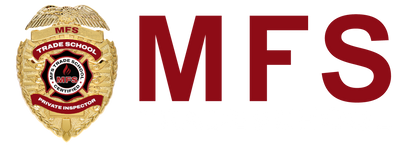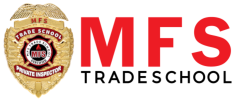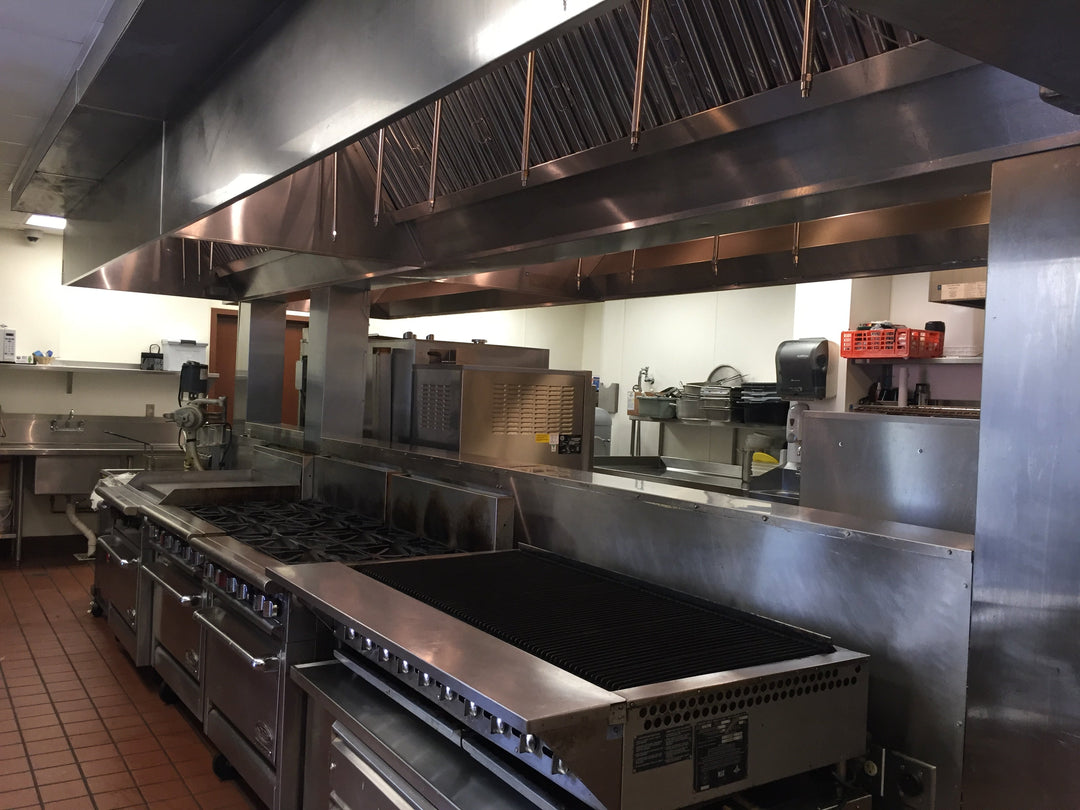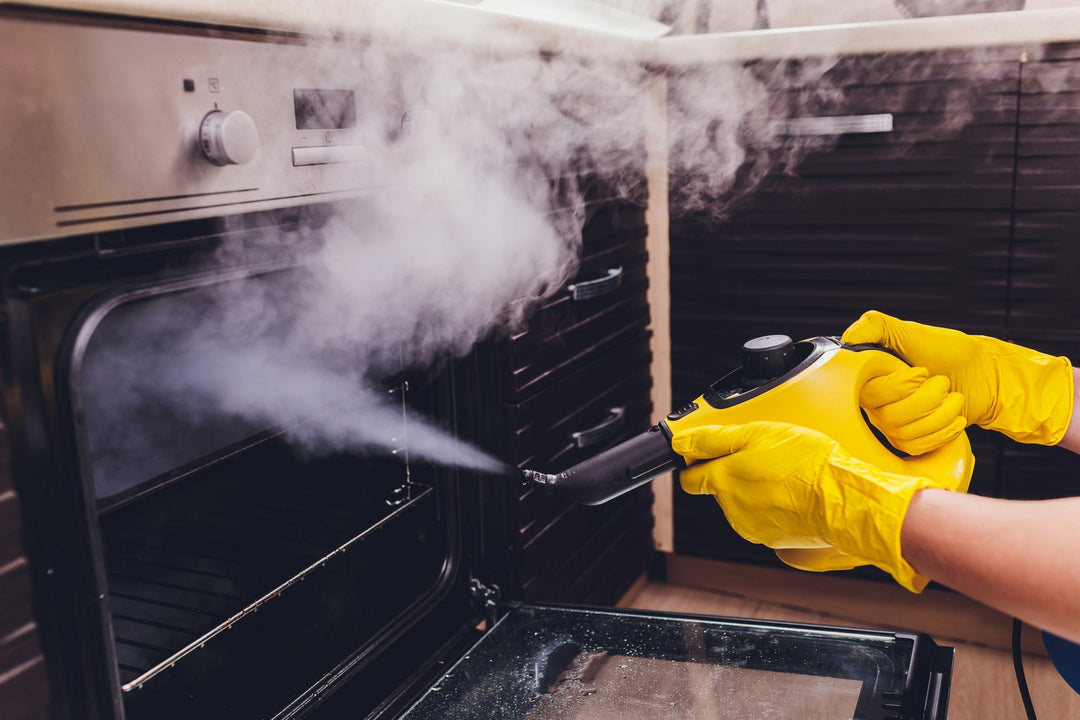Did You Know These 5 Health Risks Come from Your Exhaust System?

A neglected commercial kitchen exhaust system silently threatens the health of employees and customers alike. These systems, designed to remove smoke, grease, and airborne contaminants, become hazardous when maintenance falls behind.
The Hidden Dangers in Your Kitchen Ceiling
Unclean exhaust systems create a perfect environment for:
-
Bacterial growth on grease-laden surfaces
-
Accumulation of harmful airborne particles
-
Development of toxic fumes
-
Cross-contamination risks
The quality of indoor air in commercial kitchens directly impacts food preparation safety and workplace health. A compromised ventilation system fails to remove cooking byproducts effectively, leading to a buildup of contaminants that affect both food quality and human health.
Critical Health Impact Areas:
-
Food preparation zones
-
Staff working areas
-
Customer dining spaces
-
Adjacent building sections
Regular ventilation maintenance stands as the primary defense against these health hazards. Clean exhaust systems protect against respiratory issues, allergic reactions, and various health complications that can arise from prolonged exposure to contaminated air.
To ensure your kitchen exhaust system is properly maintained, consider hiring professionals who specialize in hood cleaning. They have the expertise to thoroughly clean your exhaust system, mitigating the health risks associated with neglect.
The consequences of neglecting exhaust system maintenance extend beyond immediate health concerns - they can result in long-term health issues for staff members who spend extended hours in these environments and affect the dining experience of customers exposed to poor air quality.
Utilizing advanced cleaning technologies, such as the MFS Electrostatic Misting Fogger, can significantly enhance the effectiveness of your cleaning efforts. This fogger is designed for easy installation and use, making it a valuable tool for maintaining a clean and safe kitchen environment.
Maintaining your kitchen exhaust system is not just about compliance with regulations; it's about ensuring the health and safety of everyone who enters your establishment. Regular cleaning and maintenance should be viewed as an essential part of running any commercial kitchen.
1. Respiratory Problems from Airborne Contaminants
Neglected kitchen exhaust systems create a breeding ground for dangerous airborne particulates that directly impact respiratory health. These microscopic particles, including grease, smoke, and bacteria, circulate through the air and penetrate deep into the respiratory system.
Common Respiratory Issues from Kitchen Exhaust Contaminants:
-
Chronic coughing
-
Shortness of breath
-
Wheezing
-
Chest tightness
-
Bronchial inflammation
-
Reduced lung function
Dirty kitchen ventilation systems release concentrated amounts of harmful substances into the air. Restaurant staff exposed to these contaminants face increased risks of developing:
-
Chronic bronchitis
-
Upper respiratory infections
-
Pneumonia
-
Exacerbation of existing respiratory conditions
Bacterial Growth Impact
Unclean exhaust systems create ideal conditions for bacterial proliferation. These microorganisms become airborne through the ventilation system, leading to:
-
Respiratory tract infections
-
Allergic reactions
-
Compromised immune response
-
Increased susceptibility to illness
Particulate Matter Exposure
The size of airborne particles determines their impact on respiratory health:
-
PM10 particles (10 micrometers): Lodge in the upper respiratory tract
-
PM2.5 particles (2.5 micrometers): Penetrate deep into lung tissue
-
Ultrafine particles: Enter the bloodstream through the lung tissue
Kitchen exhaust systems accumulate these particles when not properly maintained. The concentration of these contaminants increases over time, creating a toxic environment for kitchen staff and patrons.
Long-term Health Effects
Continuous exposure to contaminated air from poorly maintained kitchen exhausts can result in:
-
Permanent lung damage
-
Reduced respiratory capacity
-
Development of chronic respiratory conditions
-
Increased sensitivity to airborne irritants
-
Compromised immune system function
Regular cleaning and maintenance of kitchen exhaust systems prevent the accumulation of these harmful particulates. Professional services like Kitchen Exhaust Hood Cleaning ensure proper airflow and reduce respiratory health risks for everyone in the restaurant environment.
Incorporating essential seasonal maintenance tips for kitchen exhaust systems can keep them running efficiently and safely year-round, as detailed in this seasonal maintenance guide.
Moreover, it's crucial to acknowledge the broader implications of poor indoor air quality resulting from these issues. For a comprehensive understanding of how indoor air quality affects health, consider exploring the guidelines provided by health authorities, which emphasize the importance of maintaining clean air within indoor environments.
2. Allergic Reactions Induced by Pollutants
Unmaintained exhaust systems harbor a complex mix of pollutants that trigger severe allergic reactions in kitchen staff and customers. These reactions manifest through multiple symptoms, often exacerbated by air pollution:
1. Immediate Reactions
-
Persistent sneezing
-
Skin rashes and hives
-
Watery, itchy eyes
-
Nasal congestion
-
Throat irritation
2. Long-term Health Issues
-
Chronic skin conditions
-
Persistent allergic rhinitis
-
Heightened sensitivity to other allergens
-
Compromised immune responses
Unclean ducts create perfect breeding grounds for bacteria, mold, and other microorganisms. These biological contaminants release spores and toxins into the air, creating a cascade of health issues for sensitive individuals. For instance, mold exposure can lead to serious respiratory problems.
The risk intensifies in high-humidity environments where microbial growth thrives. In such cases, indoor air quality becomes a significant concern as these contaminants spread through the ventilation system, affecting food preparation areas and dining spaces.
Common Allergens in Dirty Exhaust Systems:
-
Mold spores
-
Bacteria colonies
-
Accumulated dust mites
-
Food particle residue
-
Grease particle deposits
Employee sick leave rates often spike in establishments with poorly maintained ventilation systems. The combination of food particles, grease residue, and biological growth creates a potent mixture that overwhelms the body's natural defense mechanisms.
Regular cleaning protocols must address these specific allergen sources:
-
Duct surface sanitization
-
Filter replacement schedules
-
Grease trap maintenance
-
Ventilation pathway clearing
-
Air quality monitoring
Professional cleaning services, such as those that offer Silver Package Exhaust Hood Cleaning, utilize specialized equipment and cleaning agents designed to eliminate these allergen sources, protecting both staff health and food safety standards.
Moreover, establishments can learn from successful case studies on transforming a hood cleaning business to improve their own practices.
3. Eye and Skin Irritations Caused by Grease Vapors
If exhaust systems are not properly maintained, grease vapors can pose serious health risks to kitchen staff. These vapors can directly come into contact with the skin and eyes, causing various uncomfortable and potentially severe conditions.
Common Eye Conditions:
-
Persistent eye irritation
-
Burning sensation
-
Blurred vision
-
Excessive tearing
Skin-Related Issues:
-
Rashes
-
Dry, flaky skin
-
Itching and burning
-
Skin inflammation
The severity of these conditions worsens with prolonged exposure to air filled with grease. Kitchen staff members working near poorly maintained exhaust systems often report immediate discomfort, such as:
-
Stinging eyes during cooking operations
-
Skin redness after long shifts
-
Ongoing irritation even after leaving work
The chemical makeup of cooking grease vapors includes volatile organic compounds (VOCs) that can penetrate the protective barrier of the skin. These compounds strip away natural oils from the skin, disrupting its normal protective function and making it more vulnerable to irritation and infection.
High-temperature cooking methods produce aerosolized grease particles that stay suspended in the air. These particles:
-
Settle on exposed areas of skin
-
Clog pores and lead to acne breakouts
-
Create a film on contact lenses
-
Irritate the mucous membranes
Staff members working in areas with poor ventilation are at greater risk of being exposed to these irritants. When exhaust systems accumulate grease, they become less effective at removing these harmful vapors, resulting in a cycle of increased exposure and worsening symptoms.
Regular cleaning of exhaust systems eliminates built-up grease and ensures proper extraction of vapors, significantly lowering the risk of these health problems. Professional maintenance helps maintain optimal airflow and prevents the concentration of irritating substances in the kitchen environment.
4. Fire Hazards Escalated by Grease Buildup
Grease accumulation in kitchen exhaust systems creates a severe fire hazard that puts lives at risk. The National Fire Protection Association reports that 47% of restaurant fires originate from cooking equipment, with grease-laden exhaust systems being a primary contributor.
Critical Fire Risk Factors:
-
Grease deposits act as fuel, intensifying fires rapidly
-
Accumulated grease can ignite at temperatures as low as 370°F
-
Flames can spread through the entire duct system within minutes
-
Grease fires are challenging to extinguish with conventional methods
When grease buildup catches fire, it releases toxic smoke containing:
-
Carbon monoxide
-
Hydrogen cyanide
-
Acrolein
-
Particulate matter
These compounds create immediate health emergencies:
-
Respiratory Distress: Smoke inhalation can cause immediate breathing difficulties
-
Toxic Exposure: Chemical burns to the respiratory tract
-
Disorientation: Carbon monoxide poisoning affects escape ability
-
Long-term Health Effects: Potential chronic respiratory conditions
The intensity of grease fires poses unique challenges:
"A single inch of grease buildup can fuel a fire hot enough to breach metal ductwork and spread to structural components within minutes." - Fire Safety Engineering Journal
Property Damage Risks:
-
Structural compromise from intense heat
-
Water damage from fire suppression efforts
-
Smoke contamination throughout the facility
-
Extended business closure during repairs
Regular inspection of these high-risk areas reveals dangerous grease accumulation:
-
Hood filters
-
Horizontal ductwork
-
Vertical risers
-
Exhaust fan housing
-
Rooftop units
To mitigate these risks, it's crucial to maintain proper kitchen exhaust hood cleaning practices. This is not just a matter of routine maintenance; it's enforced by fire inspectors and insurance companies nationwide under NFPA Code 96.
Understanding the top myths about kitchen hood cleaning can help in debunking misconceptions and ensuring safety procedures are followed correctly.
For those looking to start a business in this essential service, our Gold Package Kitchen Exhaust Hood Cleaning provides all the necessary equipment needed to begin such a venture.
-
General Poor Indoor Air Quality and Its Health Effects
Poor indoor air quality in restaurants creates a range of health problems beyond just breathing issues and allergies. The combination of insufficient airflow and kitchen activities creates an uncomfortable environment that affects both employee performance and customer satisfaction.
Physical Health Impacts:
-
Persistent headaches
-
Chronic fatigue
-
Dizziness
-
Nausea
-
Muscle pain
-
Reduced cognitive function
Workplace Performance Effects:
-
Decreased concentration levels
-
Reduced productivity
-
Increased sick leave rates
-
Higher staff turnover
-
Compromised food service quality
Restaurants with poor ventilation often have high levels of carbon dioxide, which can make employees feel sleepy and mentally foggy. This leads to lower performance and higher safety risks in the kitchen.
Temperature and Humidity Concerns:
-
Excessive heat retention
-
Uncomfortable working conditions
-
Bacterial growth promotion
-
Food spoilage acceleration
-
Mold development risks
Studies show that restaurants with bad air quality report up to 30% more cases of workplace illness compared to those with proper ventilation maintenance. The combination of harmful chemicals from cleaning products and cooking emissions poses a hidden danger to long-term health.
Critical Health Indicators:
-
Carbon monoxide levels
-
Particulate matter concentration
-
Humidity percentage
-
Temperature consistency
-
Air exchange rates
Health code violations related to ventilation systems often point to larger air quality issues. These problems can lead to disease outbreaks and compromise food safety standards. Regular monitoring of air quality is crucial for keeping a restaurant healthy.
The implementation of proper kitchen hygiene protocols, including systematic exhaust system maintenance such as using a hood degreaser, directly correlates with improved workplace health metrics. Restaurant operators must recognize these connections to protect their staff and patrons effectively.
Moreover, adopting practices like cooking oil filtration can significantly enhance the overall dining experience while also improving air quality by reducing the amount of smoke and odors released during cooking.
To address the skills gap in the restaurant industry, trade schools are offering important training programs that teach individuals the skills needed for effective restaurant maintenance and cleaning.
In addition, it's essential for restaurants to be aware of their impact on the environment, particularly concerning food waste. By implementing better waste management practices, not only can they improve their operational efficiency but also contribute positively to environmental sustainability.
For more information on these training programs or to contact us with any questions, please visit our contact page.
Importance of Regular Maintenance for Mitigating Health Risks
Regular maintenance is crucial for maintaining a safe and healthy commercial kitchen environment. It involves professional cleaning services using specialized techniques and equipment to remove built-up contaminants from exhaust systems, protecting both staff and customers from potential health risks.
Essential Maintenance Components:
1. Professional Cleaning Schedule
-
Monthly inspection of ductwork
-
Weekly surface cleaning of visible components
-
Daily wipe-down of accessible areas
2. Filter Replacement Protocol
-
Regular assessment of filter condition
-
Scheduled replacement based on usage patterns
-
Documentation of filter changes
-
Selection of appropriate filter grades
Proper staff training creates a foundation for maintaining clean air quality. Kitchen personnel need comprehensive knowledge about:
-
System operation procedures
-
Early warning signs of malfunction
-
Basic maintenance tasks
-
Emergency response protocols
Air Quality Monitoring Systems
Modern air quality monitoring equipment provides real-time data on:
-
Particulate matter levels
-
Carbon monoxide concentration
-
Humidity levels
-
Temperature variations
These measurements help identify potential hazards before they become serious health risks.
Professional Maintenance Benefits:
-
Reduced exposure to airborne contaminants
-
Decreased risk of respiratory issues
-
Enhanced workplace safety
-
Improved compliance with health regulations
-
Lower likelihood of system failures
Professional maintenance services utilize advanced cleaning techniques and specialized equipment to remove accumulated grease, debris, and contaminants from exhaust systems. These services employ certified technicians who understand the complexities of commercial kitchen ventilation systems and follow industry-standard cleaning protocols.
Staff Training Requirements:
-
System operation fundamentals
-
Daily cleaning procedures
-
Maintenance checklist completion
-
Emergency protocols
-
Documentation requirements
Implementing a comprehensive maintenance strategy requires coordination between management, staff, and professional service providers. Regular inspections by certified technicians ensure all components function correctly and meet safety standards.
Monitoring Protocol:
-
Daily visual inspections
-
Weekly performance checks
-
Monthly system evaluations
-
Quarterly professional assessments
In addition to routine maintenance, it is crucial to adopt advanced virus disinfection methods in commercial kitchens to ensure public health and safety amidst rising foodborne illnesses and viral outbreaks. Proper equipment maintenance also plays a significant role in boosting efficiency, reducing downtime, and saving on costly repairs for cleaning businesses.
Guidelines for Ensuring Safe Kitchen Air Quality Standards Like TR19 Specification
The TR19 specification stands as the industry benchmark for maintaining ventilation hygiene in commercial kitchens. This comprehensive guideline outlines specific cleaning frequencies, inspection protocols, and maintenance requirements to ensure optimal system performance.
Key Components of TR19 Compliance:
-
Regular system assessments at specified intervals
-
Documentation of cleaning procedures
-
Photographic evidence of completed work
-
Risk assessment protocols
-
Post-cleaning verification methods
The TR19 specification addresses critical areas of ventilation maintenance, establishing measurable standards for cleanliness. These standards help prevent the accumulation of grease, reduce fire risks, and maintain healthy air quality levels throughout kitchen spaces.
Energy Efficiency Benefits
Clean ventilation systems aligned with TR19 standards deliver significant energy savings:
-
Reduced fan power consumption
-
Decreased heating and cooling costs
-
Lower maintenance expenses
-
Extended equipment lifespan
-
Optimized airflow performance
A TR19-compliant system typically operates 25-30% more efficiently than poorly maintained installations. This efficiency translates into substantial cost reductions for restaurant operators while ensuring safer working conditions.
Implementation Guidelines
Restaurant owners can achieve TR19 compliance through:
-
Regular Inspections
-
Monthly visual checks
-
Quarterly deep cleaning assessments
-
Annual certification reviews
-
Professional Cleaning Services
-
Specialized equipment usage
-
Certified technician deployment
-
Detailed cleaning reports
-
System Monitoring
-
Air quality measurements
-
Pressure differential tracking
-
Temperature control verification
Documentation Requirements
TR19 compliance demands proper record-keeping:
-
Cleaning schedules
-
Maintenance logs
-
Inspection certificates
-
Risk assessment reports
-
Employee training records
These documents serve as proof of compliance and help track system performance over time. They also provide valuable data for identifying potential issues before they escalate into serious health risks.
By implementing TR19 specifications, restaurant owners protect their staff and customers while optimizing their ventilation systems' performance. This proactive approach to ventilation hygiene creates healthier kitchen environments and delivers measurable business benefits through improved energy efficiency and reduced operational costs.
In addition to the TR19 guidelines, it's crucial to implement thorough virus disinfecting services to ensure the safety of the kitchen environment from harmful pathogens. These services can significantly enhance the overall hygiene standards of your restaurant.
Moreover, adhering to essential cleanliness tips from health inspectors can further assist in maintaining a clean and safe kitchen environment, thereby ensuring customer satisfaction and public health safety.
FAQs (Frequently Asked Questions)
What are the hidden health risks associated with neglected exhaust systems in commercial kitchens?
Neglected exhaust systems can lead to several hidden health risks, including respiratory problems from airborne contaminants, allergic reactions induced by pollutants, eye and skin irritations caused by grease vapors, increased fire hazards due to grease buildup, and general poor indoor air quality affecting overall health and comfort.
How do dirty kitchen exhaust systems contribute to respiratory ailments among employees?
Dirty kitchen exhausts release airborne particulates and bacteria that can trigger respiratory ailments such as asthma and bronchitis. Poor ventilation allows allergens and contaminants to accumulate, exacerbating allergies and increasing the risk of illness among kitchen staff.
In what ways can grease vapors from unclean exhaust systems affect eye and skin health?
Grease vapors are irritants that can cause skin conditions like dermatitis and eye issues such as conjunctivitis. Accumulated grease in ventilation systems releases harmful particles that irritate mucous membranes and skin, impacting employee health and safety.
Why is the regular maintenance of kitchen exhaust systems critical for preventing fire hazards?
Grease buildup in exhaust systems is highly flammable and significantly escalates the risk of kitchen fires. Regular cleaning removes grease deposits, reducing fire hazards, protecting property, ensuring employee safety, and maintaining compliance with health regulations.
What role does indoor air quality play in the well-being of restaurant employees and customers?
Poor indoor air quality caused by neglected ventilation systems leads to discomfort, decreased well-being, increased workplace illnesses, and potential food contamination. Maintaining clean exhaust systems improves air quality, enhances comfort, reduces sick leave, and promotes a safer dining environment.
How do standards like the TR19 specification help improve kitchen ventilation hygiene and safety?
The TR19 specification provides guidelines for effective ventilation hygiene that minimize health risks by ensuring efficient operation of exhaust systems. Adhering to TR19 improves energy efficiency, reduces mold and chemical inhalation risks, prevents contamination, and supports compliance with restaurant health codes.






